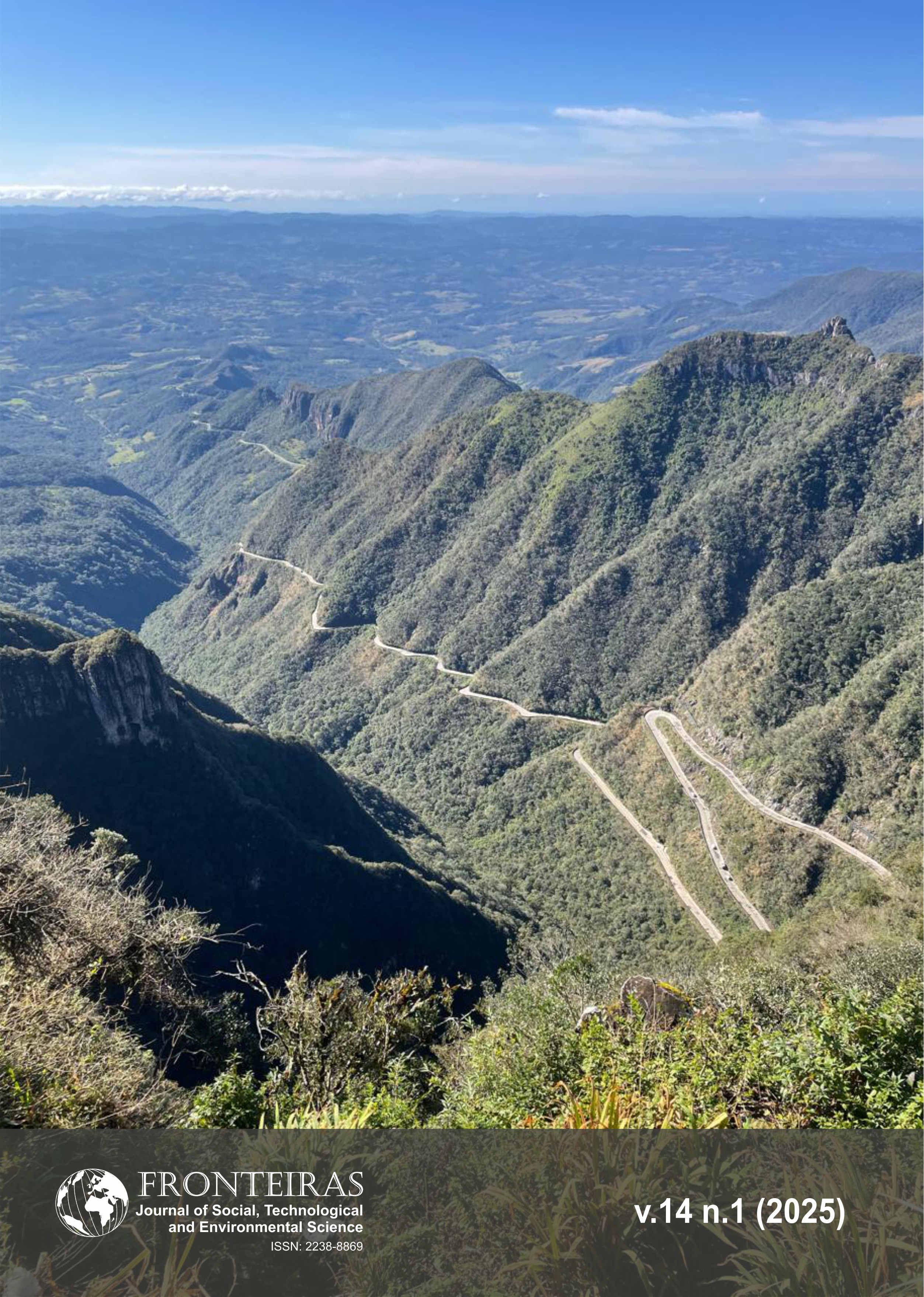Natural Antioxidants for the Development of Recyclable Packaging with Corrosion Inhibitors for Metal Parts
DOI:
https://doi.org/10.21664/2238-8869.2025v14i1.p186-218Keywords:
corrosion tests, metal corrosion, corrosion rate, inhibition efficiencyAbstract
This study explores sustainable alternatives to protect metal parts during transportation and storage in an effort to reduce the environmental impact of conventional plastic packaging. The purpose of this work is to develop and evaluate recyclable packaging with the addition of natural antioxidants to act as corrosion inhibitors to protect metal parts from corrosion and mitigate the environmental impact of conventional packaging. The effectiveness of natural antioxidants extracted from papaya seeds (Carica papaya L.) as corrosion inhibitors in recyclable packaging was evaluated. Corrosion and inhibitor efficiency tests were performed in different media (acid, neutral, and alkaline) to determine the capacity of these packages to protect metal surfaces from degradation. The results indicated that the natural antioxidants in papaya seed extract provide significant protection, especially in acidic environments, in addition to substantially reducing environmental impact. It was concluded that using natural antioxidants in recyclable packaging is a viable and promising solution for the effective protection of metals and the promotion of more sustainable industrial practices.
References
Al-Otaibi MS, AL-Mayouf AM, Khan M, Mousa AA, Al-Mazroa SA, Alkhathlan HZ 2014. Corrosion inhibitory action of some plant extracts on the corrosion of mild steel in acidic media. Arabian Journal Of Chemistry 7(3):340-346. http://dx.doi.org/10.1016/j.arabjc.2012.01.015.
Associação Brasileira De Normas Técnicas. (2023). Corrosão por exposição à névoa salina — Métodos de ensaio (NBR 17088). Abnt.
American Society for Testing and Materials. (2004). Standard Practice for Laboratory Immersion Corrosion Testing of Metals. (ASTM G31-72). Astm International. Disponível em: https://cdn.standards.iteh.ai/samples/33955/25d351122f994d5080621bbacf81fbba/ASTM-G31-72-2004-.pdf. Acesso em: 19 jul. 2024.
Buchheit RG 2018. Corrosion Resistant Coatings and Paints. Handbook Of Environmental Degradation Of Materials. Elsevier, Amsterdam, p. 449-468. http://dx.doi.org/10.1016/b978-0-323-52472-8.00022-8.
Callister Jr WD, Rethwisch DG 2018. Materials science and engineering: An introduction. Wiley, Nova Jersey, 977 pp.
European Standard Norma Européenne Europaische Norm. (2000). Plain washers - Norma series. (EN ISO 7089). Cen. Disponível em: https://www.newfastener.com/wp-content/uploads/2013/03/DIN125-DIN-EN-ISO-7089.pdf. Acesso em: 19 jul. 2024.
https://pdfcoffee.com/qdownload/din125-din-en-iso-7089-pdf-pdf-free.html
Gentil V 2022. Corrosão. Ltc, Rio de Janeiro, 408 pp.
Kavitha N, Manjula P, Anandha Kumar N 2014. Syneristic effect of C. Papaya leaves extract-Zn2+ in corrosion inhibition of mild steel in aqueous medium. Research Journal of Chemical Sciences 4(8):88-93.
Loto CA 2012. Electrochemical Corrosion Behaviour of Mild Steel Reinforcement in Concrete in H2SO4. Journal Of Materials And Environmental Science 3(1):195-205.
National Association Of Corrosion Engineers. (2005). Preparation, Installation, Analysis, and Interpretation of Corrosion Coupons in Oilfield Operations. (RP0775). Nace. Disponível em: https://webstore.ansi.org/preview-pages/NACE/preview_NACE+Standard+RP0775-2005.pdf?srsltid=AfmBOor7Y6ATCVK4YZ_nj_36gWthbgHsEz2qWapH2ui7FBl824F8jrGr. Acesso em: 19 jul. 2024.
Nwigwe US, Mbam SO, Umunakwe R 2019. Evaluation of Carica papaya leaf extract as a bio-corrosion inhibitor for mild steel applications in a marine environment. Materials Research Express 6(10):105107. http://dx.doi.org/10.1088/2053-1591/ab3ff6.
Oghenerukevwe PO, Ajuwa CI, Samuel OD, Adepoju TF 2023. Carica papaya leaf extract (CPLE) as green corrosion inhibitor for AISI 4140 steel in 15% hydrochloric acid medium. Case Studies In Chemical And Environmental Engineering 8(1): 100479. http://dx.doi.org/10.1016/j.cscee.2023.100479.
Okafor PC, Osabor VI, Ebenso EE 2007. Ecofriendly corrosion inhibitors: inhibitive action of ethanol extracts of Garcinia kola for the corrosion of mild steel in H2SO4 solutions. Pigment & Resin Technology 36(5):299-305.
Poongothai N, Athira R, Neena PK 2018. A Green Approach to Preparing Bio-Inhibitor for Mild Steel Corrosion in Different Acid Mediums. International Journal Of Engineering & Technology 7(36):322-329. http://dx.doi.org/10.14419/ijet.v7i3.6.15124.
Reis APC, Alves RMV 2007. Embalagens com inibidores de corrosão. Boletim de Tecnologia e Desenvolvimento de Embalagens 3:1-3. Disponível em: https://ital.agricultura.sp.gov.br/arquivos/cetea/informativo/v19n3/v19n3_artigo1.pdf. Acesso em: 19 jul. 2024.
Roberge PR 2008. Corrosion Engineering: principles and practice. New York: McGraw-Hill, New York, 754 pp.
Silva ALVC, Mei PR 2021. Aços e ligas especiais. Edgard Blucher, São Paulo, 576 pp.
Torres VV, Cabral GB, Silva ACG, Ferreira KCR, D´elia E 2016. Ação inibidora de extratos da semente do mamão Papaia na corrosão do aço-carbono 1020 em HCl 1 Mol L-1. Química Nova 39(4):423-430. http://dx.doi.org/10.5935/0100-4042.20160046.
Verma C, Ebenso EE, Quraishi MA, Hussain CM 2021. Recent developments in sustainable corrosion inhibitors: design, performance and industrial scale applications. Materials Advances 2(12):3806-3850. http://dx.doi.org/10.1039/d0ma00681e.
Downloads
Published
How to Cite
Issue
Section
License
Copyright (c) 2025 Muryllo Almeida da Silva, Fabrício Bagli Siqueira, Francisco de Assis Léo Machado, Eduardo Shimoda, Fabio Freitas da Silva, Aldo Shimoya

This work is licensed under a Creative Commons Attribution-NonCommercial 4.0 International License.
This journal offers immediate free access to its content, following the principle that providing free scientific knowledge to the public, we provides greater global democratization of knowledge.
As of the publication in the journal the authors have copyright and publication rights of their articles without restrictions.
The Revista Fronteiras: Journal of Social, Technological and Environmental Science follows the legal precepts of the Creative Commons - Attribution-NonCommercial-ShareAlike 4.0 International. 


